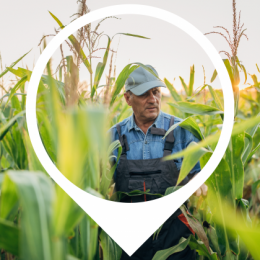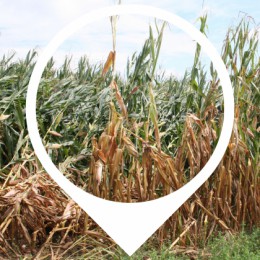
Common crop insurance mistakes that can cost producers money.
Having crop insurance can save your farm from disaster. However, it can seem overwhelming, and if you don’t do it right, it could cost you. Here are some common crop insurance mistakes that cost producers money:
1. Missing important deadlines
This one may sound silly, but once life gets busy, important filing dates get forgotten about. Unlike many other types of insurance, crop insurance has several deadlines for filing information. Deadline to apply for your type of coverage, deadline to report your planted acres, deadline to add wind or fire coverage to a hail policy, and deadline to report crop damage, just to name a few.
2. Not reviewing actual production history (APH)
If you are a new producer and fail to elect a new producer status on or before the production reporting date for the insured crop, the yield of that crop will be assigned using the variable T-yield method instead of using 100% of the county T-yield. Because of this, the yield guarantee will be smaller, and any indemnity payment will be lower. Depending on your yield database, there also can be significant advantages for increasing liability when adding the trend adjustment and yield exclusion endorsements by the sales closing date.
3. Not reporting your planted acreage correctly
When calculating your indemnity, your insurer uses your acres planted and your yield. If you under report, you will receive a lower indemnity payment because your yield will be artificially inflated. If you over report, your production to count will be taken from all planted acreages from that crop per unit. Therefore, the correct acreage will be reduced to the correct number of acres. The indemnity will be less due to the reduction in your total guarantee, and you will be refunded any overpayment of premium.
4. Planting before the initial plant date or after the final plant date
Any acres planted before the initial plant date are not eligible for a replant payment. Replant payments typically occur after early season hailstorms or a late freeze. Coverage is also reduced if the crop is planted for the first time after the final plant date. These dates vary by crop and county.
5. Harvesting in a different way than insured
If you harvested crop in a manner that was not in your contract, and have a claim, it will not be covered. For example, if the producer insured his crop as grain, but then used it for silage, there is no harvested grain for the adjuster to measure. Also failing to have an appraisal done on acreage being destroyed before harvest (i.e. chopping silage) will affect your yield history and potential claim payments.
Crop insurance is hard. That’s why it pays to work with an agent who has the skills and expertise in the field. If you have questions about your crop insurance coverage, reach out to the FSI crop insurance team, visit us at NEins.com or you can find more information about crop insurance basics at the U.S. Department of Agriculture’s Risk Management Agency.
February 17, 2023 by First State Insurance Agency




